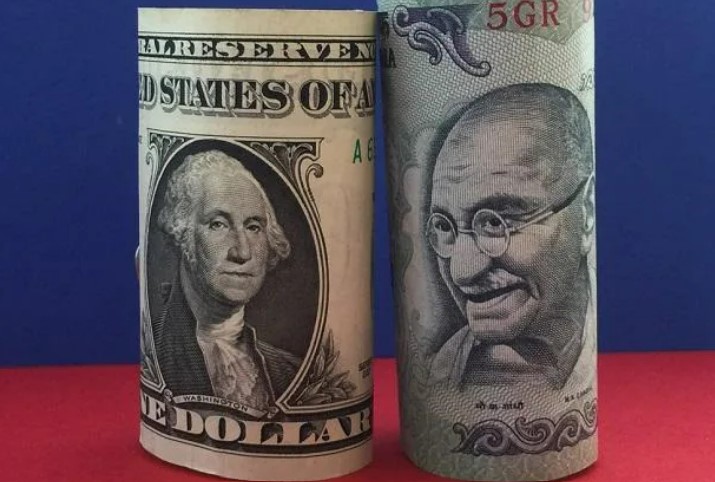Virendra Pandit
New Delhi: Until the Second World War (1939-45), the British currency, the pound sterling, dominated as the global currency of exchange; after that, the US dollar replaced it. Fluctuations in a nation’s currency rates versus the USD are part of the routine international monetary system in which money from one country flows into another at different rates each year.
In poorer countries, an expensive US dollar creates a financial crisis, as it did in Sri Lanka. It is now lining up in Pakistan and a dozen other countries; in mid-income countries like India, an expensive dollar means more exports and fewer imports.
As of now, India has a foreign exchange reserve of nearly USD 600 billion.
In early trade on Tuesday, the Indian rupee breached the psychologically important exchange rate level of INR 80 per US dollar. Experts say there is no reason to worry about this relentless depreciation—7 percent per year-to-date in 2022—as it also provides a mixed bag of opportunities. Numbers really don’t matter: the US dollar is, for example, worth over 138 Japanese yen. That doesn’t make Japan a poor country!
A US dollar is also worth 359 Sri Lankan rupees and 217 Pakistani rupees. Clearly, currency depreciation’s impact is varied in different countries.
Since 2014, the US dollar has become costlier by over 25 percent against the Indian rupee, according to the data provided by the Finance Ministry in the Lok Sabha. The exchange rate of the INR against the USD, which stood at 63.33 on December 31, 2014, increased to 79.41 on July 11, 2022.
Meanwhile, the Ministry said they expected the rupee depreciation to boost export competitiveness, though imports would also get costlier.
With India emerging as an export-oriented economy, this impact would remain mixed, benefiting some sectors, and harming others.
According to the International Monetary Fund (IMF), in 2019, India became the world’s fifth-largest economy with a nominal GDP of USD 2.94 trillion, overtaking France (USD 2.71 trillion) and the UK (USD 2.83 trillion). In 2021, it was worth USD 3.18 trillion.
In 2022, the IMF projected India’s USD 3.53 trillion economy to overtake Britain’s USD 3.38 trillion again. By 2027, the UK’s economy will be at USD 4.55 trillion, while India would surpass it with a neat USD 1 trillion margins, settling at USD 5.53 trillion. And suppose the forecasts show the shape of things to come. In that case, India is all set to dethrone even Germany, whose nominal GDP is estimated at USD 5.36 trillion by 2027, to emerge as the world’s fourth-largest economy.
This expansion of the Indian economy to break into the Top 5 is relentless.
When the Indian rupee depreciates, imports become costlier as we have to pay more. But the export of Make-in-India goods and services, especially to the US, turns more competitive as the Americans will pay India less for similar products from other countries.
According to the media reports, the Indian IT services and technology industry has been the biggest gainer of a depreciating rupee as it earns in US dollars and other foreign currencies. Since the US contributes over 50 percent of the Indian revenue in this sector, any fall in the rupee increases their earnings.
Likewise, an expensive dollar will be better for gems, jewelry, and textile sectors as their exports will be cheaper, at least in the short run.
The steady depreciation in the value of the Indian rupee against the USD might, however, prove expensive to India Inc. The listed companies’ revenue expenses in foreign currency or imports may exceed their export revenues or revenue earnings in foreign exchange.
Some corporate giants had already hedged against the Indian rupee’s depreciation. For example, Reliance Industries, the Tata Group, Bharti Airtel, and Aditya Birla are among Indian conglomerates that have hedged their revenue and costs linked to the US dollar, giving them financial cover as the rupee fell past 80 against the greenback on Tuesday.
Those planning to send their children abroad for studies in foreign countries, or travel overseas, however, will have to shell out more rupees.

